 Stars
StarsRecent Blog Posts
Truck Driver Violations That Can Result in an Accident
 Maryland is one of nine states which had the lowest number of fatal truck accidents in 2022. Even so, about 4,000 truck collisions occur in Maryland each year, leading to 50 or more fatalities and at least 1,875 severely injured victims. Truck accidents in the state occur most frequently on the highways that run through and around Baltimore. These include I-83, I-70, and I-95.
Maryland is one of nine states which had the lowest number of fatal truck accidents in 2022. Even so, about 4,000 truck collisions occur in Maryland each year, leading to 50 or more fatalities and at least 1,875 severely injured victims. Truck accidents in the state occur most frequently on the highways that run through and around Baltimore. These include I-83, I-70, and I-95.
The trucking industry is heavily regulated, primarily because the sheer size and weight of a fully loaded semi-truck means those in smaller vehicles are much more likely to suffer catastrophic injuries or death when a collision with a semi-truck occurs. While drivers of semi-trucks and trucking companies have a greater responsibility to the public, unfortunately, regulations and laws designed to protect others on the roadways are not always respected.
Filing a Medical Malpractice Claim for Failure to Treat a UTI
 Urinary tract infections (UTIs) affect millions of people across the United States each year. More than 10 percent of all women in the nation are diagnosed with a UTI each year, and 60 percent of women will have at least one UTI during their lifetime. UTIs appear to be on the rise for reasons that are not entirely clear. Urinary tract infections are also becoming more resistant to antibiotics, which makes them more dangerous. Those with Type 2 diabetes and the elderly are significantly more prone to UTIs.
Urinary tract infections (UTIs) affect millions of people across the United States each year. More than 10 percent of all women in the nation are diagnosed with a UTI each year, and 60 percent of women will have at least one UTI during their lifetime. UTIs appear to be on the rise for reasons that are not entirely clear. Urinary tract infections are also becoming more resistant to antibiotics, which makes them more dangerous. Those with Type 2 diabetes and the elderly are significantly more prone to UTIs.
Elderly patients in nursing homes are especially prone to urinary tract infections due to catheter use and co-existing medical conditions that can mask UTI symptoms. Higher rates of cognitive illnesses, like dementia and Alzheimer’s, can cause patients to be unable to communicate symptoms of a UTI. Urinary tract infections can progress rapidly and can sometimes lead to severe complications such as sepsis or even death.
Filing a Wrongful Death Claim for a Single-Vehicle Accident
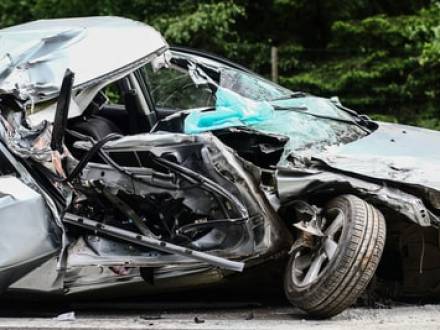 This past December, two people died after their vehicle veered off the roadway and hit a tree in southern Anne Arundel County. The accident occurred early in the morning; emergency personnel responded at approximately 4:30 a.m. Law enforcement did not provide names for the victims of the crash because the family had not yet been notified.
This past December, two people died after their vehicle veered off the roadway and hit a tree in southern Anne Arundel County. The accident occurred early in the morning; emergency personnel responded at approximately 4:30 a.m. Law enforcement did not provide names for the victims of the crash because the family had not yet been notified.
Many loved ones of those who have been killed in a one-vehicle crash do not believe they can file a wrongful death claim following a one-vehicle accident. While this may be true in many cases, it is not true in all cases and underscores the importance of having a full understanding of liability and legal options following such an accident. One-vehicle crashes often leave more questions than answers as far as the cause of the accident.
Fortunately, new technology can often help determine the cause of the accident. Accident reconstruction is often used to help determine accident causes as well. If you have lost a loved one in a single-vehicle accident, speaking to a Frederick, MD personal injury attorney can be extremely beneficial.
Vulnerable Adult Abuse in Maryland Group Home
 Several months ago, two individuals in Maryland were arrested on charges of vulnerable adult abuse after an investigation into an incident that occurred in a group home in Trappe. The two were charged with vulnerable adult abuse, second-degree assault, false imprisonment, and reckless endangerment. This particular group home houses non-verbal, disabled adults who require round-the-clock care.
Several months ago, two individuals in Maryland were arrested on charges of vulnerable adult abuse after an investigation into an incident that occurred in a group home in Trappe. The two were charged with vulnerable adult abuse, second-degree assault, false imprisonment, and reckless endangerment. This particular group home houses non-verbal, disabled adults who require round-the-clock care.
A staff member coming onto their shift discovered one of the residents with his hands and feet bound; it was estimated the resident had been like that for approximately six hours. Unfortunately, vulnerable adults experience abuse and neglect far more often than should ever happen. If a loved one of yours has suffered abuse or neglect while in a group home, it is extremely important that you speak to a knowledgeable Hagerstown, MD group home abuse lawyer.
Are Group Homes Like Nursing Homes?
Group homes are similar to nursing homes but on a much smaller scale. Those who have disabilities or mental health conditions and who need more specialized care are often placed in group homes. Those in group homes may require daily living assistance but may be able to do some things on their own as well. The goal of group homes is to give residents care while allowing them a level of independence when appropriate.
What Evidence is Required in a Medical Malpractice Claim?
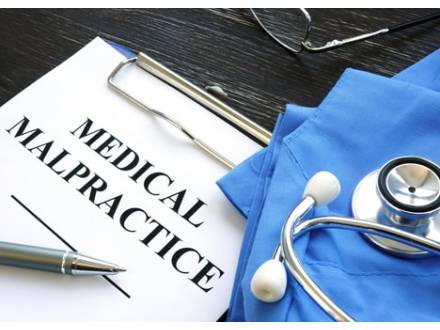 Maryland has more active physicians per capita than almost any other state, ranking second out of the 50 states with 377.8 active physicians per 100,000 people. Despite the number of active physicians, the number of medical malpractice filings in the state is relatively low—usually between 600 and 650 cases per year.
Maryland has more active physicians per capita than almost any other state, ranking second out of the 50 states with 377.8 active physicians per 100,000 people. Despite the number of active physicians, the number of medical malpractice filings in the state is relatively low—usually between 600 and 650 cases per year.
A medical malpractice claim is filed when a healthcare professional acts in a way that another similarly trained professional would not have done, given the same circumstances. While it may sound fairly straightforward, medical malpractice claims can be complicated, requiring a highly experienced medical malpractice attorney and solid evidence.
Gathering the proper evidence to support a medical malpractice claim can be daunting, requiring a knowledgeable Hagerstown, MD medical malpractice attorney to guide you through the process. Below, you will find a list of the types of evidence required for a successful medical malpractice claim.
Wrongful Death Claims Resulting from Nursing Home Neglect
 Unfortunately, elder abuse and neglect in nursing homes is far more commonplace than most want to acknowledge. The National Center on Elder Abuse reports that one in 10 nursing home residents in the United States have experienced some form of abuse – physical, emotional, psychological, financial, or sexual. Even more have experienced instances of neglect.
Unfortunately, elder abuse and neglect in nursing homes is far more commonplace than most want to acknowledge. The National Center on Elder Abuse reports that one in 10 nursing home residents in the United States have experienced some form of abuse – physical, emotional, psychological, financial, or sexual. Even more have experienced instances of neglect.
When you consider that abuse, neglect, and wrongful deaths in nursing homes are significantly underreported, the number of victims is likely much higher. What happens when nursing home neglect or abuse leads to death? If your loved one died in a nursing home due to abuse or neglect, it is important that you speak to an experienced Hagerstown, MD nursing home abuse and neglect lawyer so you will understand your options.
Can You Sue for a Surgical Error in Maryland?
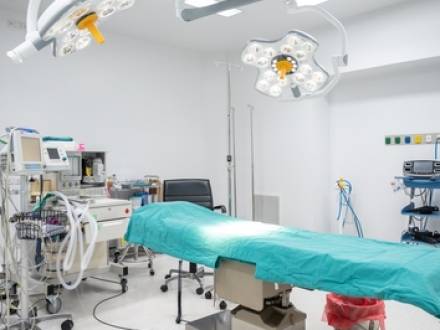 Surgical procedures are often essential for treating medical conditions or saving lives, but they are not without risks. While some complications are unavoidable, others are due to preventable mistakes made by healthcare providers. If you or a loved one have been harmed by a surgical error, a Catonsville, MD medical malpractice attorney can help you navigate the legal process and pursue justice for your pain and suffering.
Surgical procedures are often essential for treating medical conditions or saving lives, but they are not without risks. While some complications are unavoidable, others are due to preventable mistakes made by healthcare providers. If you or a loved one have been harmed by a surgical error, a Catonsville, MD medical malpractice attorney can help you navigate the legal process and pursue justice for your pain and suffering.
What Qualifies as a Surgical Error?
A surgical error happens when a surgeon or other medical professional deviates from the expected standard of care during a procedure and harms the patient. These mistakes go beyond the inherent risks associated with surgery, as they often stem from negligence. Common examples of surgical errors include:
-
Performing surgery on the wrong site or patient
What Steps Should You Take After Suspecting Elder Abuse?
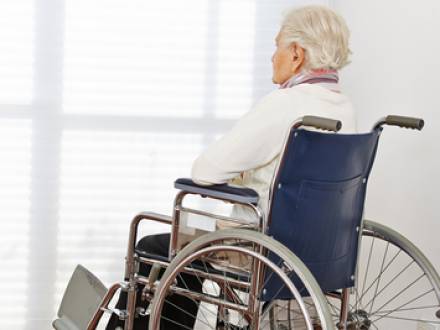 Elder abuse is a heartbreaking issue that impacts some of the most vulnerable members of our community. Whether it occurs in a nursing home or assisted living facility, it is important to be able to recognize the signs of abuse or neglect. If you suspect that your loved one may be a victim of elder abuse, taking the proper steps can help protect them and hold the responsible parties accountable. An experienced Maryland personal injury attorney can offer guidance on how to pursue justice.
Elder abuse is a heartbreaking issue that impacts some of the most vulnerable members of our community. Whether it occurs in a nursing home or assisted living facility, it is important to be able to recognize the signs of abuse or neglect. If you suspect that your loved one may be a victim of elder abuse, taking the proper steps can help protect them and hold the responsible parties accountable. An experienced Maryland personal injury attorney can offer guidance on how to pursue justice.
What Are the Signs of Elder Abuse?
To recognize elder abuse, you must be alert to both physical and behavioral signs. It is essential to act promptly if you notice any of these issues, such as:
-
Malnutrition or dehydration
Holiday Shopping Hazards: How Can You Stay Safe?
 The holiday season is filled with festive cheer, bustling stores, and the thrill of finding the perfect gift. However, during all of this excitement, the holiday rush can also lead to unexpected dangers. The chaotic atmosphere increases the risk of potential accidents, from slippery sidewalks to crowded retail stores. If you have been injured while holiday shopping, it is essential to understand your legal rights. A Maryland personal injury attorney can help you pursue a claim and seek the compensation you deserve.
The holiday season is filled with festive cheer, bustling stores, and the thrill of finding the perfect gift. However, during all of this excitement, the holiday rush can also lead to unexpected dangers. The chaotic atmosphere increases the risk of potential accidents, from slippery sidewalks to crowded retail stores. If you have been injured while holiday shopping, it is essential to understand your legal rights. A Maryland personal injury attorney can help you pursue a claim and seek the compensation you deserve.
What Are the Most Common Holiday Shopping Hazards?
Holiday shopping injuries can occur anywhere, from inside stores to parking lots. Common premises liability risks include:
-
Slip and Fall Accidents: Wet floors, uneven surfaces, or poorly maintained walkways inside shopping centers can cause serious falls.
What Evidence Is Needed for a Pedestrian Injury Claim?
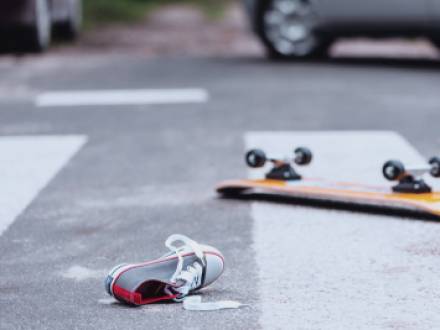 Pedestrian accidents can turn a simple walk into a life-changing event. Victims may be left with devastating injuries and mounting medical bills as they struggle to regain normalcy. If you or a loved one has been injured in a pedestrian accident, understanding what evidence is needed to prove negligence can make all the difference in your personal injury claim. A knowledgeable Maryland personal injury lawyer can help you navigate this complex process and ensure you have the necessary evidence to pursue fair compensation.
Pedestrian accidents can turn a simple walk into a life-changing event. Victims may be left with devastating injuries and mounting medical bills as they struggle to regain normalcy. If you or a loved one has been injured in a pedestrian accident, understanding what evidence is needed to prove negligence can make all the difference in your personal injury claim. A knowledgeable Maryland personal injury lawyer can help you navigate this complex process and ensure you have the necessary evidence to pursue fair compensation.
How Do You Prove Negligence in a Pedestrian Accident?
Establishing negligence is the foundation of any successful pedestrian injury claim. To prove negligence, you must exhibit the following factors:
-
The driver owed a duty of care to safely operate their vehicle.
-
The driver failed to meet this standard, for example, by speeding, texting while driving, or ignoring a crosswalk.





